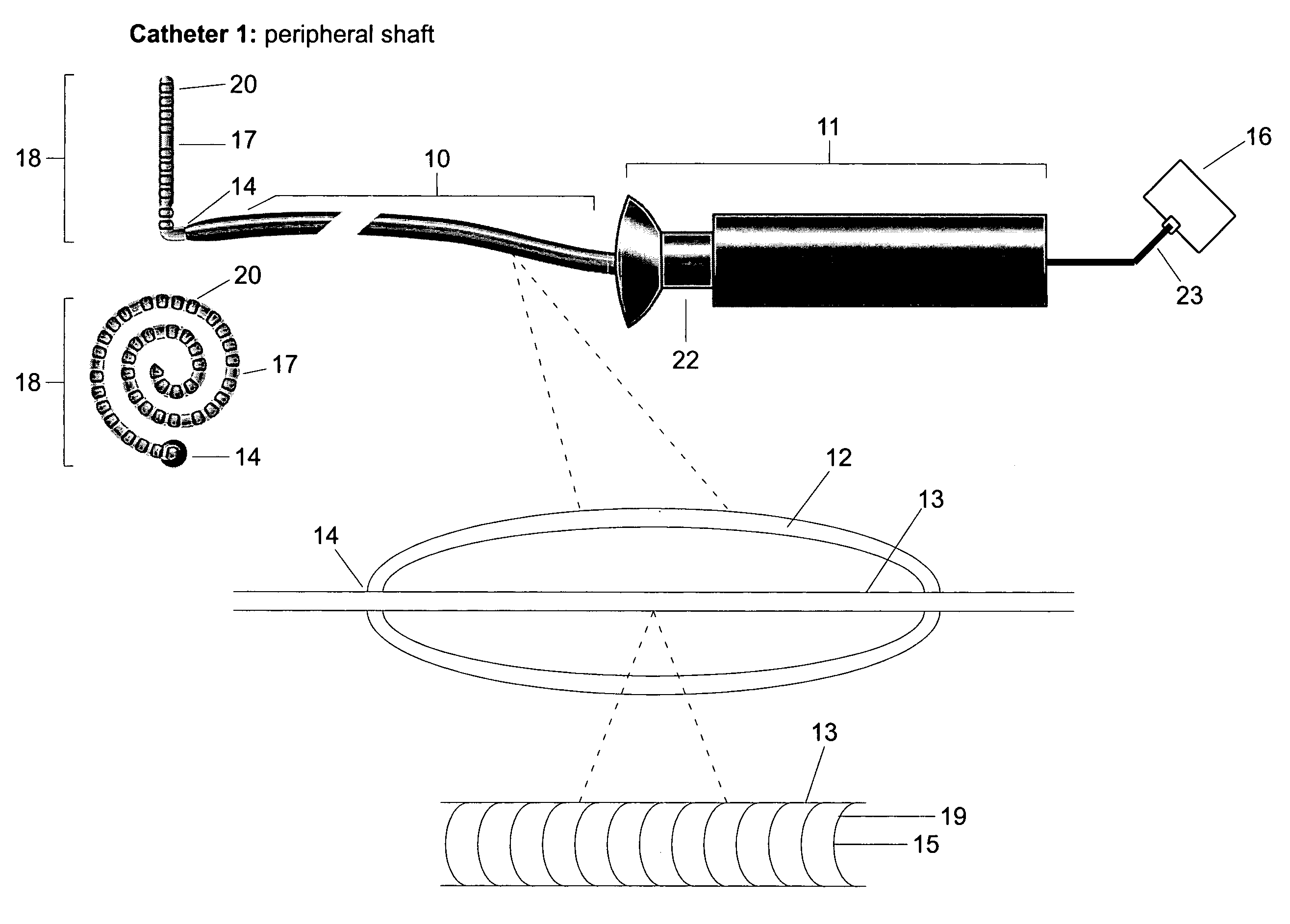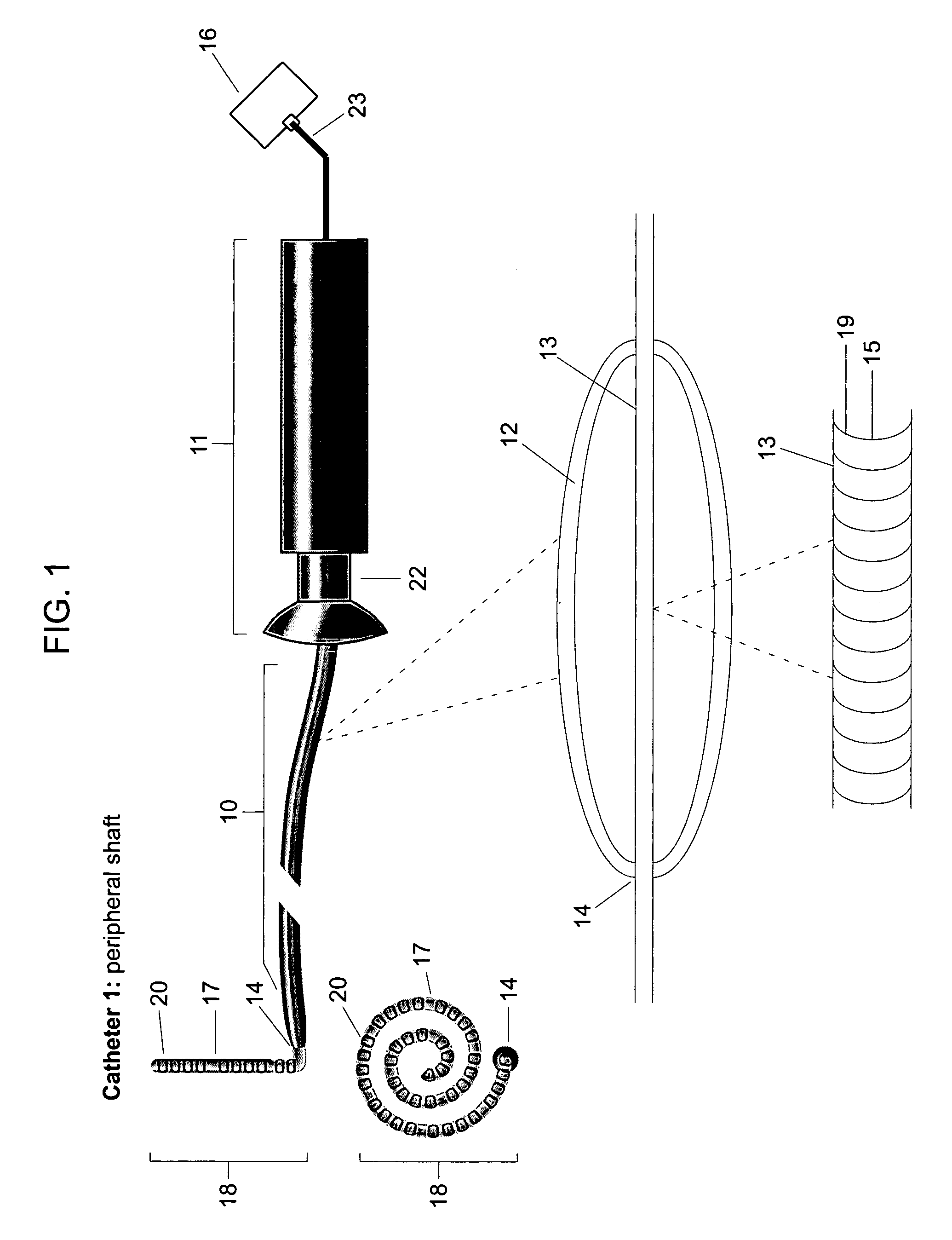Ablation catheters and methods for their use
a catheter and catheter technology, applied in the field of catheters and methods for targeted tissue ablation, can solve the problems of organ malfunction, lack of synchrony, and ineffective pumping of blood into the ventricl
- Summary
- Abstract
- Description
- Claims
- Application Information
AI Technical Summary
Benefits of technology
Problems solved by technology
Method used
Image
Examples
Embodiment Construction
[0062] The present invention provides catheters for performing targeted tissue ablation in a subject. In preferred embodiments, the catheters comprise a catheter body having a proximal end and distal end and usually a lumen therebetween. The catheter is preferably of the type used for performing intracardiac procedures, typically being introduced from the femoral vein in a patient's leg. The catheter is preferably introducable through a sheath and preferably has a steerable tip, as described generally above, which allows positioning of the distal tip when the distal end of the catheter is within a heart chamber. The catheters preferably include electrode arrays which are deployable from the distal end of the catheter to engage a plurality of individual electrode elements within the array against cardiac tissue, typically atrial wall tissue or other endocardial tissue. Electrode arrays may be configured in a wide variety of ways. In particular, the present invention provides devices ...
PUM
 Login to View More
Login to View More Abstract
Description
Claims
Application Information
 Login to View More
Login to View More - R&D
- Intellectual Property
- Life Sciences
- Materials
- Tech Scout
- Unparalleled Data Quality
- Higher Quality Content
- 60% Fewer Hallucinations
Browse by: Latest US Patents, China's latest patents, Technical Efficacy Thesaurus, Application Domain, Technology Topic, Popular Technical Reports.
© 2025 PatSnap. All rights reserved.Legal|Privacy policy|Modern Slavery Act Transparency Statement|Sitemap|About US| Contact US: help@patsnap.com



